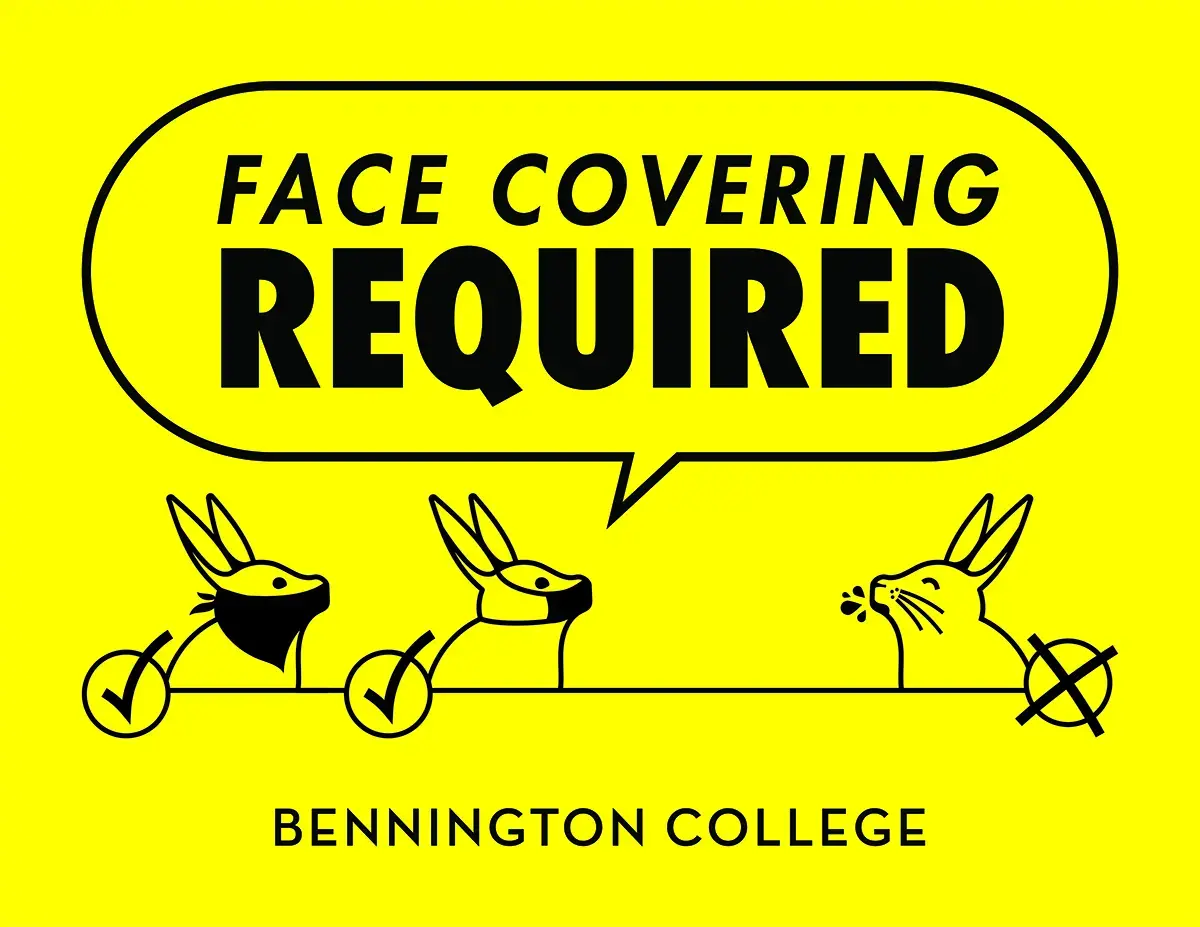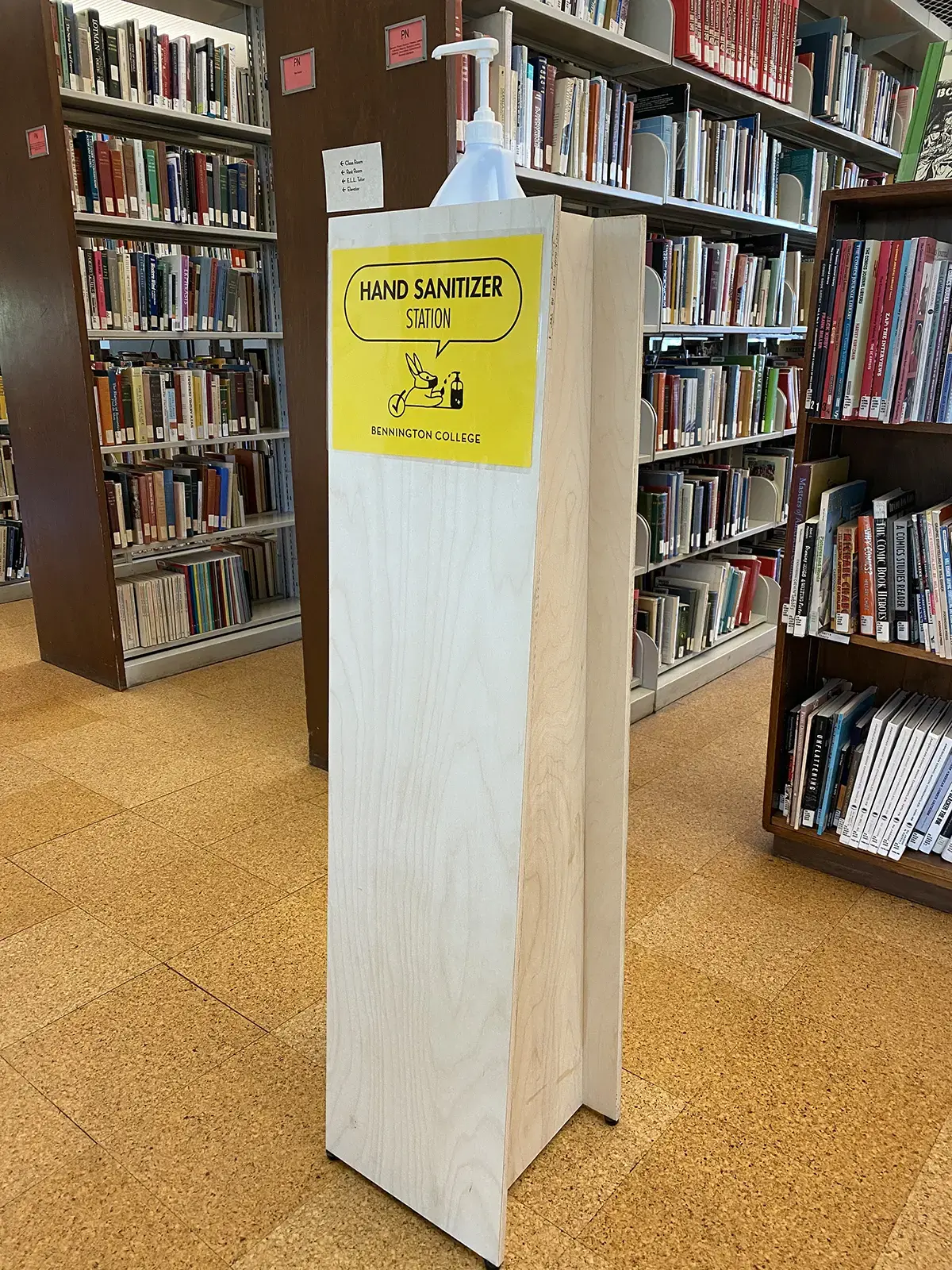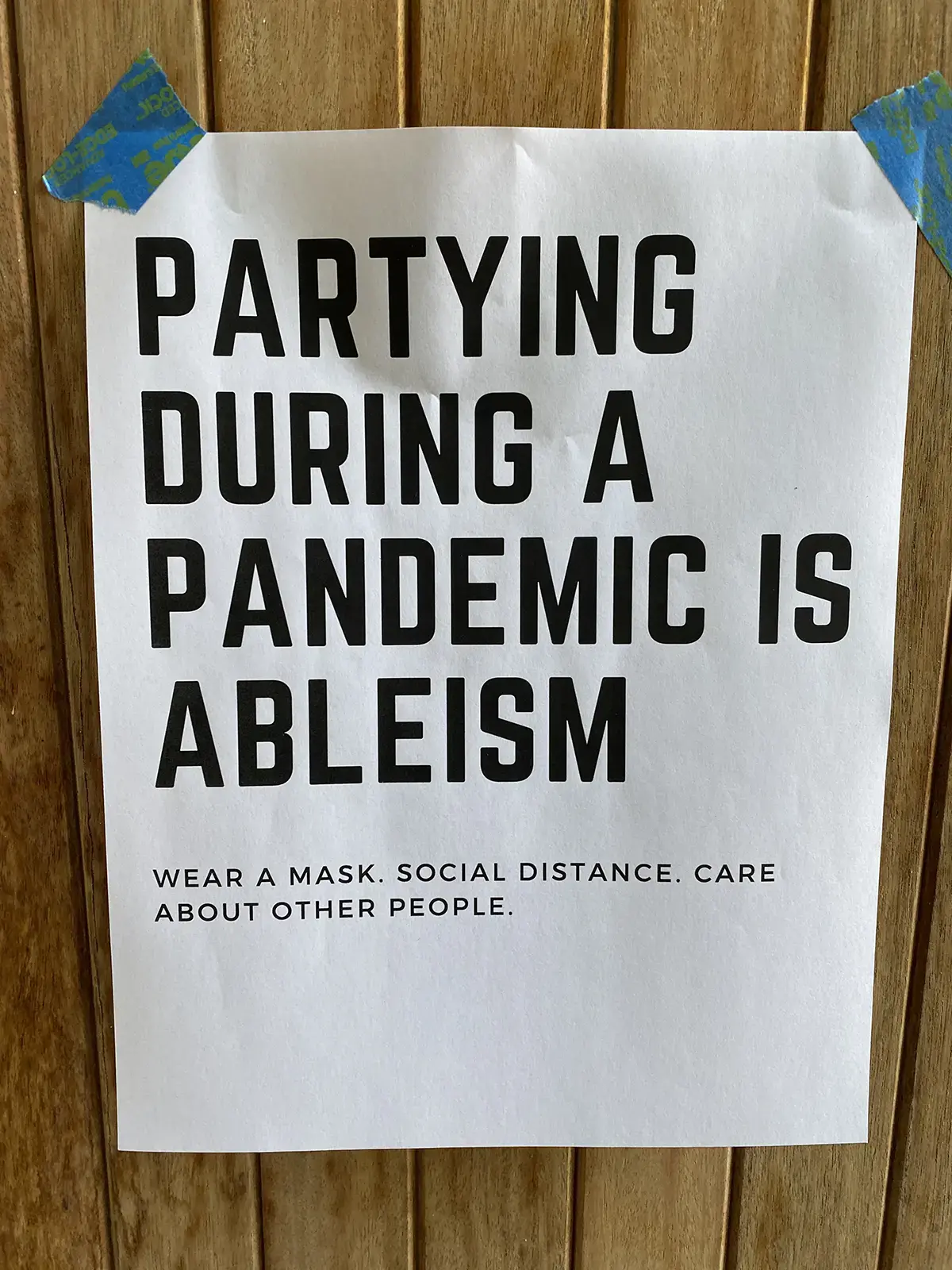Trust and Connectedness: A Community Approach to COVID-19
As colleges and universities around the country reopen this fall amid the COVID-19 pandemic, students, faculty, and staff have had to reimagine all aspects of higher education—from academics and classes to residential and social life—to comply with public health mandates that slow the spread of the virus. Here's how Bennington has done it safely.
To safely welcome students back to campus, much depends on the behaviors and shared responsibilities of all individuals in a college’s community. While other colleges and universities have made national headlines for large parties, shaming students, and quick shutdowns, Bennington College’s community approach to planning has resulted in the safe return of students to campus and remaining open.
Our planning has enabled us to identify and isolate the three positive cases that were caught during arrival testing and to maintain a rate of zero active cases since then. It’s not just us; Vermont currently boasts the lowest COVID-19 infection rates on college campuses in the United States, and at Gov. Phil Scott’s September 15 press briefing, Vermont’s COVID-19 response was praised by Dr. Anthony Fauci as a model for the country.
These early successes are the result of months-long collaboration between Bennington’s community, leadership, peer institutions, and state and local government. These strategies and values contributed to a safe and healthy reopening of the College:
1. Early Action and Frequent Collaboration
Throughout Vermont, colleges and universities started responding to the threat of COVID-19 early, in close coordination with state leadership and in tandem with one another. Schools, businesses, and organizations started lockdown in early March 2020 and, under the direction of Governor Phil Scott and Health Commissioner Mark Levine—who met weekly with all Vermont college and university health center directors—only began reopening slowly and incrementally as infection rates fell. As a result, all colleges and universities in the state were in a strong position for a modified reopening in the fall, with a toolkit of strategies for keeping rates low.
Bennington College closely collaborated with Southwestern Vermont Medical Center, following their medical guidance and taking into account SVMC’s capacity for COVID-19 patients when structuring our reopening plan.
Prior to students, faculty, and staff returning to campus, the College presented an overview of our detailed plan to the Bennington Select Board and North Bennington Village Board. The College is not only an academic home to students from around the world—it is also an active member of the local community, a critical employer to residents from Bennington and the surrounding towns, and a partner to local businesses and organizations. Therefore, the safety and well-being of these communities and our on-campus population were paramount in our decision making process.
“When we presented our plans to the local boards, they were incredibly supportive and clearly expressed that they valued our partnership and wanted us to succeed,” said Oceana Wilson, Acting Dean of the College and Dean of the Library. “It was so meaningful to know they were cheering us on.”
2. Follow the Bunnies: Creative Approaches to Challenges
As in most public businesses and locations, Bennington College displays signage reminding community members to wear a mask and maintain social distancing. Instead of taking a conventional approach here, the College embraced the need for signage as an opportunity to build community through playful creativity and a very Bennington approach.
The COVID bunnies were created to make these important public health reminders memorable, distinct, and whimsical. Around campus, they can be found wearing masks, social distancing, and explaining the finer points of Bennington’s responsive reopening plan.
“I landed on the image of a rabbit because I wanted these characters to be something that could actually be found in the Bennington landscape, while being an overall positive image with the potential to symbolically represent everyone,” said Graphic Designer Kat Hughes.

In March, the College first began upping its supply of hand sanitizer in common areas. However, the freestanding hand sanitizer pedestals that were originally ordered were held up due to supply chain issues. Undeterred, Vice President for Facilities Management and Planning Andrew Schlatter and Buildings & Grounds Carpenter Dan Pratt designed and created a dozen stands of their own.
“While we had installed many standard wall-mounted hand sanitizer stations throughout campus, we wanted some freestanding units for high-traffic locations,” said Schlatter. “We also found that the large pump-style hand sanitizer bottles, such as those used in these stands, were much more readily available and cost effective than other hand sanitizer products.”
The stands were designed to be quickly fabricated in the College’s own shop utilizing available materials, with dimensions driven by standard plywood sizes and fastening details that streamlined the process and minimized waste.
The result was hand sanitizer stands that look clean and simple, while also being freestanding and stable.
“We used unfinished wood to make them look less clinical and more friendly,” said Schlatter. “I also wanted to create something that could be repurposed after the current need for ubiquitous hand sanitizer stations ultimately subsides. At that point, we'll add a small platform at the top, and these will become display stands for student work in sculpture and ceramics.”
As with the College’s signage program, these stands retain artistic beauty and personality while also serving the various public health and safety measures that comprise our response to the pandemic.

3. Expecting the Best from Students
Students are trusted partners.
Bennington College crafted its COVID-19 prevention and response strategy in close coordination with students. Input from students informed the Commitment of Responsibility that all students, faculty, and staff signed prior to returning to campus. Student input also shaped the College’s design of monitoring and enforcement structures, and students are represented on the Commitment to Shared Responsibility Violation Panel.
Students are responsible and thoughtful enough to take ownership of their actions.
Rather than expecting the worst from students and imposing top-down rules and repercussions, College administrators got early buy-in from students on a fundamental shared goal: to keep the on-campus community healthy and learning in-person as much as possible. Achieving this buy-in meant being transparent with students about the risks and changes associated with in-person learning. Students were given a clear sense of what to expect when returning to campus, as well as discrete options for studying off-campus, allowing all students to make informed decisions about how and where to study this fall.
Our strength lies in our sense of trust and connectedness.
Reckless behavior is more than a health vulnerability; it can endanger a community’s sense of trust. Therefore, all Bennington students, faculty, and staff are held to the same high standard of accountability at all times.
Bennington students already understood the importance of mutual accountability and community trust, so the College looked for ways to reinforce that message in its signage, language, and community standards. For instance, Commitment of Shared Responsibility violation reporting includes a section for the complainant to detail how the offense affected their own wellbeing—effectively pivoting the report’s focus from punishment to a restorative conversation about how our actions impact one another.

The stakes are real.
From the get-go, all members of the College community embraced what we knew to be true: that COVID-19 is life-threatening, and that its impact can be minimized by wearing a mask and staying physically distant.
Students, faculty, and staff at Bennington understood that facing the challenges posed by COVID-19 required more than relying on the luck of Vermont’s comparatively small population and rural setting—it required active planning and participation from all members of our community.
“At Bennington, one of our foundational values is personal responsibility,” said Oceana Wilson. “For students, this manifests itself in every aspect of the educational process—rather than relying on a pre-existing major, students are encouraged to think for themselves and, with faculty guidance, they actively select courses that benefit their self-designed path. Our COVID-19 response mirrored this academic experience by treating students as thoughtful participants whose actions will directly contribute to the outcome of fall term—instead of simply giving them a mandated set of rules to follow, we emphasized how these actions further our shared goal of community health and safety.”
Ultimately, being able to return to campus is about far more than academics, particularly for first-generation, low-income, or international students.
"It’s security. It’s about having a safe place, having a room and having food,” said Daniela Naranjo-Zarate ’22. “It’s a privilege to be here and to be in person. And that’s not something I or my friends want to risk in any way."
Though planning for the future in the midst of a pandemic is a daunting task, the positive effects of the community’s collective effort thus far can already be seen in Bennington’s safe reopening.
“Keeping Bennington safe is a difficult task, because—to paraphrase Futurama—if we do things right, people won't be sure we've done anything at all,” said Emmett Donovan ’24. “And yet, time and again, I've seen our community preserve through moments of frustration or fatigue and rededicate themselves to the cause. It's a testament to the character of everyone involved that Bennington has been able to stay open, and I'm grateful to those who've worked so hard in protecting this home.”